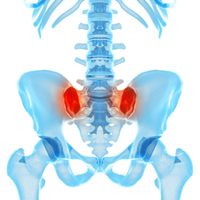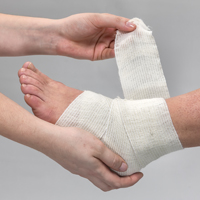Whether you are a weekend warrior or involved in youth sports, athletes ages 5-75 can experience injuries from playing the games they love. Physical therapists are adept at working with patients suffering from common basketball injuries and can help in a variety of different ways.
One of the most common basketball injuries is an ankle sprain. An Ankle sprain is a partial or complete tear of the ligaments that support the ankle. Ankle sprains may be caused by falling or sudden twisting of the ankle, such as:
• Stepping on an uneven surface or in a hole
• Taking an awkward step when running, jumping, or stepping up or down
• Having your ankle roll over when playing sports or exercising called inversion of the foot
Physical therapy intervention is the standard for treatment of ankle sprains. Treatment for the acute ankle sprain is based primarily upon the RICE principles: Rest, Ice, Compression and Elevation. This is followed quickly by a program of exercises and functional training to reduce the likelihood of chronic ankle instability. Balance and “proprioceptive” training are critical components of the rehabilitation process. In the case of a severe sprain and subsequent chronic instability, surgical intervention may be indicated.
Stress fractures are also seen frequently. A stress fracture is a tiny crack in the bone from chronic overuse. It is typically caused by repeated stress or overuse.
Causes include:
• Increasing the amount or intensity of an activity too quickly
• Switching to a different playing or running surface
• Wearing improper or old shoes
• Stress fractures can worsen by continued physical stress. Smoking can also make
Rest is the first thing you can do for a stress fracture. This includes avoiding the activity that caused the fracture and any other activities that cause pain. Rest time required is at least 6-8 weeks. Once you are ready to restart activity your physician may prescribe physical therapy. They may begin with non weightbearing activities, such as swimming, cycling, use of an Alter-G treadmill. Next, weight-bearing, nonimpact exercise may be prescribed. Gradually, low-impact activity, starting with walking, will be added to your treatment. Once you can do fast-paced walking with no pain, your physical therapist will give higher impact activities, such as light jogging.
HAND INJURIES are also commonly seen in basketball. If you experience a finger injury, a hand therapist will work to make sure your fingers heal correctly and reduce the risk of long term damage.
A Boutonniere injury is usually the result of a forceful blow to the bent finger and causes a disruption of the central slip of the extensor tendon insertion at the level of the middle phalanx. The middle joint (PIP) is unable to fully straighten. If left untreated, a PIP flexion contracture can result and chronic deformity ensue. Acute boutonniere injuries are treated with PIP extension splinting continuously 4-8 weeks. Chronic boutonniere injuries with PIP flexion contractures are treated with dynamic splinting to improve passive PIP extension and static splinting for at least 4 weeks once full PIP extension is achieved.
Mallet injuries are seen commonly with ball sports and result when the terminal extensor tendon is torn from the attachment on the bone. When this occurs, a small fragment of bone may be avulsed from the distal phalanx and the end of the finger droops down and cannot be straightened actively. X rays are necessary to determine the course of treatment. Bony mallet injuries may require surgical correction. Most of these injuries can be treated conservatively with continuous DIP extension splinting for 6-8 weeks.






